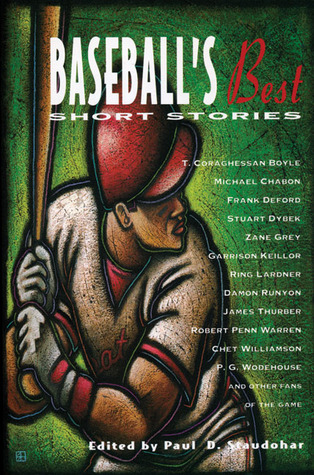I’ve wanted to read Michael Chabon’s The Amazing Adventures of Kavalier and Clay ever since I first saw it in the downtown Borders (may it rest in peace) in Indianapolis about 10 years ago. I’d always thought a novel about comic books that could win the Pulitzer (2002, I think) would be a must-read. I’m not sure why it took me 10 years to read it. The novel reads, in many ways, like a history book and has cameo appearances by the likes of Eleanor Roosevelt, Salvador Dali and Orson Welles. As the title would lead one to think, the plot revolves around the lives of Kavalier and Clay.

In 1939, Joe Kavalier, a Jewish Czech, makes a dramatic escape from Nazi-controlled Prague to meet up with his cousin, Sam Clay, in Brooklyn, New York to found Empire Comics during the “Golden Age” of comic books. Joe’s calm, cool confidence and artistic ability leads them to success; however, he is always flagged by his fear and guilt about what is happening to his family in Eastern Europe, particularly his younger brother, Tom. Sam’s insecurity-induced drive pushes them forward to further commercial success even if it doesn’t quite make up for his father’s lack of acceptance.
Here’s Chabon’s description of the rise of the comic book as entertainment : “Superman was born in the pages of a comic book, where he thrived, and after this miraculous parturition, the form finally began to emerge from its transitional funk, and to articulate a purpose for itself in the marketplace of ten-cent dreams…”.
Joe and Sam both struggle with their chosen art-form. Can comic books truly be considered an art- form? Can the course of the world, especially the world of Europe, in the late 1930’s, be changed by comic books? Most of Sam and Joe’s early work depicts a superhero called “The Escapist” who battles characters of a German, Nazi nature, and from time to time actually takes on Hitler. Can commercialism be considered art, can art be commercialized? Sam and Joe end up with a certain amount of monetary success, but at one point Sam refers to it as a “lucrative swindle”. After seeing “Citizen Kane”, Joe wonders if they could ever do anything on that level, artistically.
Joe’s life takes on comic-book proportions with adventures ranging from Antarctica to the top of the Empire State building. Sam, on the other hand, follows a (not quite) Father-Knows-Best life during the 1950’s. Rosa Luxembourg Saks is the artist that becomes entwined in both Joe’s and Sam’s life. In her character, Chabon portrays a woman at the beginning of the gender-breaking social changes to take place during the next few decades. Sam and Joe’s mentor, George Deasey, is an incredibly likable cynic. One of my favorite scenes occurs when Sam and Joe have to grapple with Deasey’s advice that if they are creating comic books for anything other than money, they are doing it for the wrong reasons.
As time goes on, comic books become the focus of concern among certain government officials because of their escapist nature and the potential for negative effects on children. At one point, Joe asks himself the question when thinking about the atrocities that took place in Europe during the war: Is it any wonder people want to escape?
Chabon’s detailed writing style and sharp wit makes this book a great read, but for some reason, it took me longer than usual to get through it. I continue to ponder the novel’s questions about the role of art and pop culture as a means of social change, a means of making a living and a means of escape.
What do you think of Michael Chabon? Have you read anything else he has written? What about comic books? Art, escapism, commercialism?



